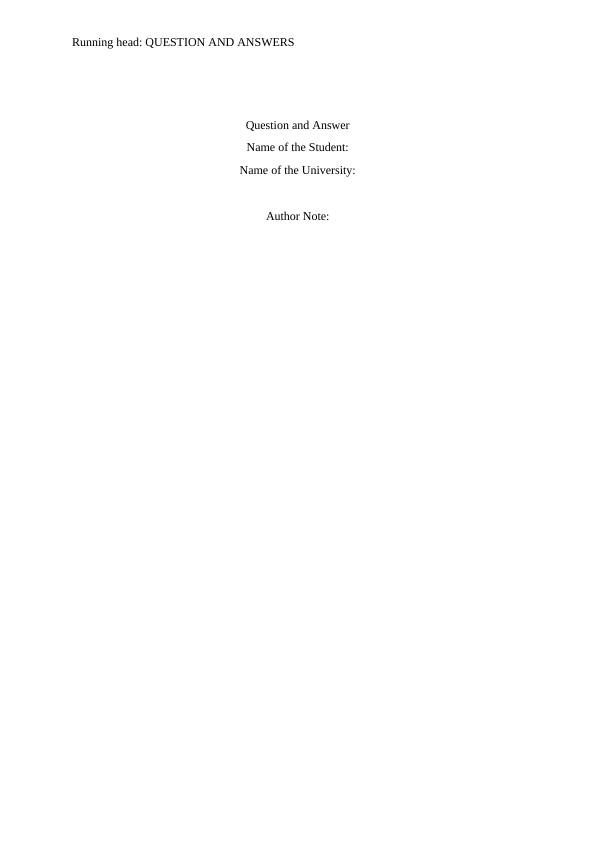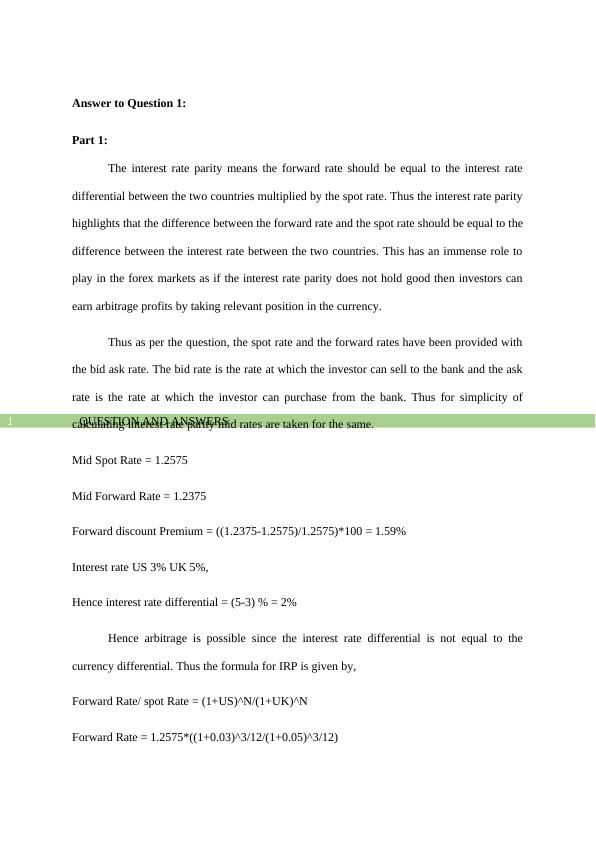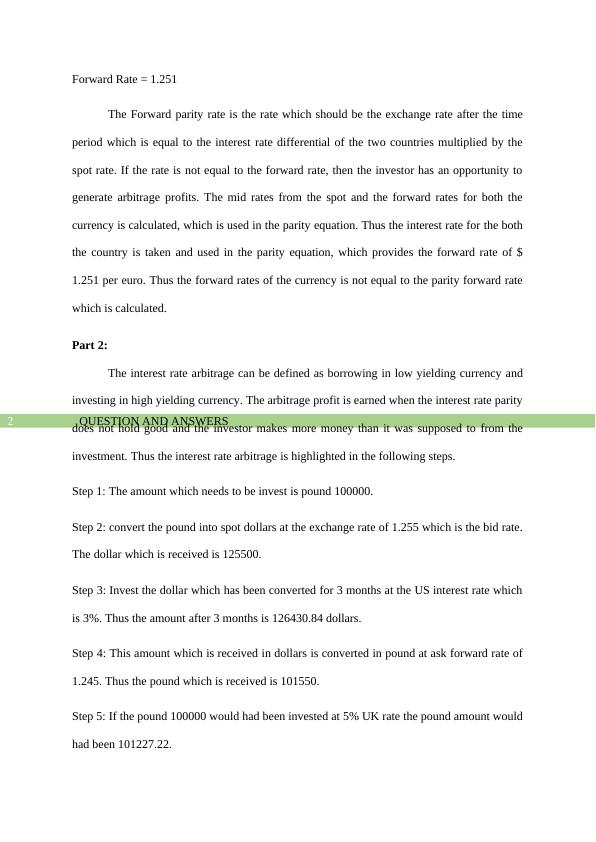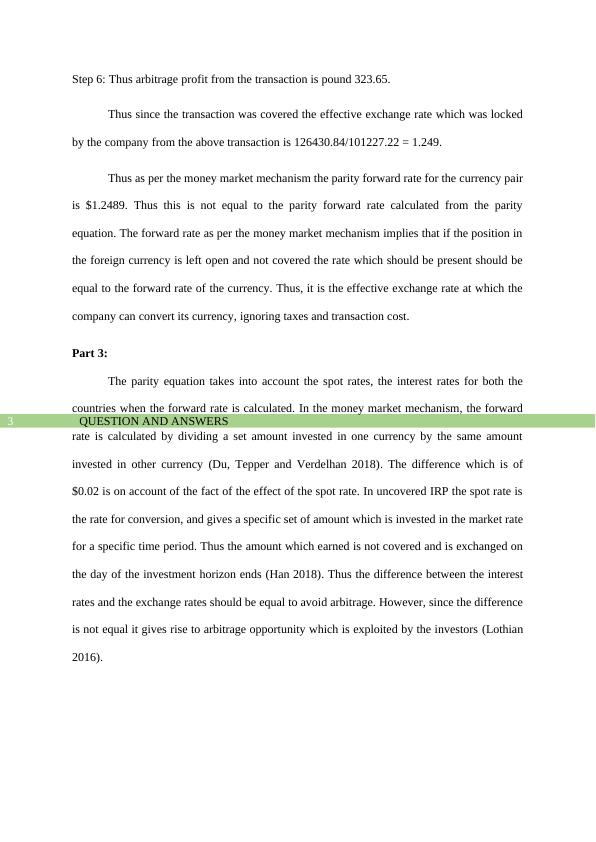Stock Options and Credit Default Swaps in Risk Management | Assignment
Added on 2022-08-08
About This Document
This module is TREASURY AND RISK MANAGMENT. This assignment comprises two questions, designed to test students’ awareness on topics involving parity conditions and swap strategies. In Question 1, students are expected to utilise an exchange rate parity condition to conduct arbitrage transactions. For Question 2, students are required to formulate and implement a swap strategy and to evaluate the effectiveness of the strategy. Students are expected to write clearly and concisely, with appropriate in-text citations and references provided (Harvard system). In both questions, the emphasis is on analytical thinking to assess the effectiveness and implications of the strategies. ?There is no word count requirement for Question 1, but must show the explainations of working step. And Word count requirement for Question2(d) = 400. Minimum number of references: 3.)
Stock Options and Credit Default Swaps in Risk Management | Assignment
Added on 2022-08-08
End of preview
Want to access all the pages? Upload your documents or become a member.




